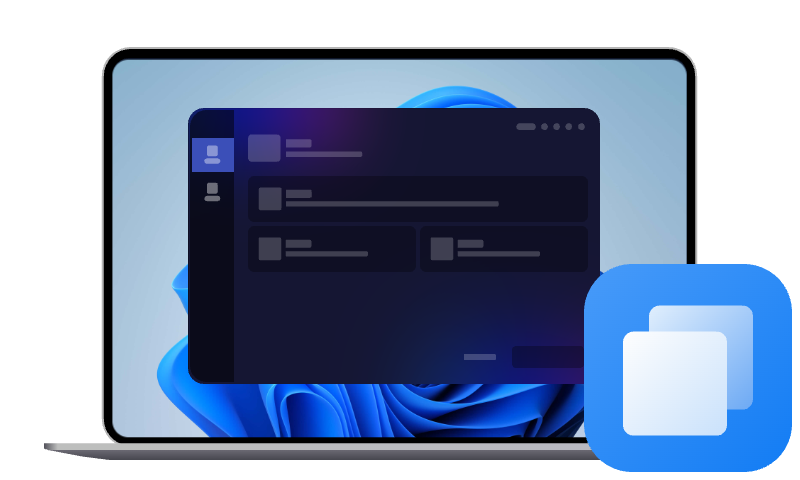How to Clone Hard Drive to SSD on Windows 11/10 | 2025 Guide
Are you looking for a solution on how to clone hard drive to SSD on Windows 11/10? This guide covers the full steps on the process with the best disk cloning software.
Upgrading from a traditional hard drive to a solid-state drive (SSD) can dramatically boost your computer's performance, responsiveness, and overall lifespan. However, the transition can be daunting if you're faced with reinstalling your operating system and applications.
This comprehensive guide explains how to clone hard drive to SSD seamlessly, with a step-by-step process that leverages the powerful cloning capabilities of AOMEI Cloner.
Preparations for Cloning Hard Disk to SSD
Before initiating the cloning process, it’s important to take several preparatory steps to ensure a smooth transition from cloning hard drive to SSD:
- Choose the Right SSD: Match your motherboard’s interface (SATA or M.2 NVMe) and ensure capacity exceeds your HDD’s used space. And opt for PCIe/NVMe SSDs for maximum speed.
- Back Up Critical Data: Use cloud storage or an external drive to safeguard files in case of cloning errors.
- Clean Up Your HDD: Delete unnecessary files and uninstall unused programs to streamline the cloning process.
- Verify Disk Partition Styles: Ensure the SSD matches your HDD’s partition style (MBR or GPT) using Disk Management.
- Update Firmware and Drivers: Update your system’s firmware and drivers to ensure optimal performance and compatibility.
These measures not only reduce potential risks but also streamline the cloning process, allowing you to transition to your new SSD with confidence.
How to Clone Disk to SSD without Reinstalling
Choosing the right cloning software is crucial for HDD to SSD cloning. AOMEI Cloner is a powerful disk cloning software that can clone both system and data disks to SSDs with great speed.

- Flexible cloning options: the tool supports a wide range of options for disk cloning, system cloning (OS migration only), and partition cloning.
- Smart Cloning: Cloning of used partitions and sector-by-sector cloning are supported. SSDs can be cloned to smaller SSDs by editing partitions.
- SSD Optimization: Providing SSD alignment ensures that your SSD performance is optimized and its life is extended.
- Compatible: Hard disk cloner is compatible with all leading brands of HDDs and SSDs and it is supported on all Windows versions including Windows PCs (Win 11, 10, 7, 8, XP, Vista) and Windows Servers.
AOMEI Cloner has a range of advanced features and options that are recommended for cloning HDDs to SSDs.It is fully compatible with the latest version of It is fully compatible with the latest version of Windows 11.
Step 1: Install and Launch AOMEI Cloner
Download the disk cloning software and select Clone > Disk Clone.
Step 2: Select Source and Destination Drives
- Source: Choose your current HDD.
- Destination: Select the SSD. Ensure it has enough space to accommodate the data used by the HDDs.
Step 3: Optimize for SSD Performance
AOMEI Cloner allows you to customize the cloning process. You can adjust partition sizes, choose sector-by-sector cloning for a more detailed copy, and optimize alignment for SSD performance. These options ensure that your SSD operates at peak efficiency after the transfer.
Step 4: Start the Cloning Process
Click Start Clone. The software replicates your OS, partitions, and data. This typically takes 15–45 minutes, depending on data size.
Step 5: Boot from the Cloned SSD
- Enter BIOS/UEFI and set the SSD as the primary boot device.
- Remove the old HDD to avoid conflicts.
Troubleshooting and Best Practices for Disk Cloning
Even with a robust tool like AOMEI Cloner, occasional issues may arise. Here are some troubleshooting tips and best practices when you clone HDD to SSD on Windows:
- Cloned SSD Not Booting: If your system fails to boot from the cloned SSD, check the BIOS settings to ensure the SSD is set as the primary boot device and ensure partition styles (MBR/GPT) match.
- Corrupted System Files: After the cloning process, you may find the corrupted system files. Please Create a bootable USB with AOMEI to repair or reclone the drive.
- SSD Not Showing Full Capacity: If you find that the SSD isn’t fully utilized, use disk management tools to extend or resize partitions. By the way, you can use some professional disk partition software, such as AOMEI Partition Assistant to resize partitions and allocate unused space.
- Misaligned SSD After Cloning: Disk cloning may also cause SSD misalignment. AOMEI Cloner provides 4K alignment. If you don't tick the option when cloning, you can check the SSD alignment with the msinfor32 code. If the value of “Partition Starting Offset” is not divisible by 4096, your SSD is not aligned.
Implementing these best practices will not only resolve common issues but also extend the longevity and reliability of your new SSD.
FAQs on Copying HDD to SSD on Windows 11/10
Below are three frequently asked questions (FAQs) about cloning your hard drive to an SSD on Windows 11/10, along with expert answers:
1. Is it safe to clone my system drive from HDD to SSD on Windows 11/10?
Yes, cloning is generally safe when you use reputable software like AOMEI Cloner. It ensures that your operating system, applications, and data are transferred without error. However, it’s important to back up your data before you start and to follow the recommended steps to avoid any unexpected issues.
2. Do I need to reinstall Windows after cloning my HDD to an SSD?
No, one of the main benefits of cloning is that it transfers the entire system—including Windows, drivers, and settings—to your new SSD. This means you can boot up from the SSD just as you did from the HDD. After cloning, simply ensure that your BIOS/UEFI is configured to boot from the SSD.
3. What should I do if my cloned SSD doesn’t boot on Windows 11/10?
If the SSD fails to boot, first check your BIOS/UEFI settings to confirm that the SSD is set as the primary boot device. Additionally, verify that all partitions were cloned properly. In some cases, you may need to adjust partition sizes or use the repair features provided by your cloning software. Consulting troubleshooting guides specific to AOMEI Cloner or your system’s manufacturer can help resolve any boot issues.
Conclusion
Cloning your hard drive to an SSD is an excellent way to upgrade your system without the headache of a complete reinstall. By following this guide and utilizing AOMEI Cloner’s robust cloning functionality, you can achieve a seamless, efficient, and secure migration.
Embrace the benefits of faster performance and enhanced system reliability while maintaining your original data integrity. For anyone looking to make the upgrade process straightforward and effective, AOMEI Cloner stands out as a trusted, professional solution.
Start your cloning journey today and experience the remarkable difference an SSD can make in your daily computing tasks.

